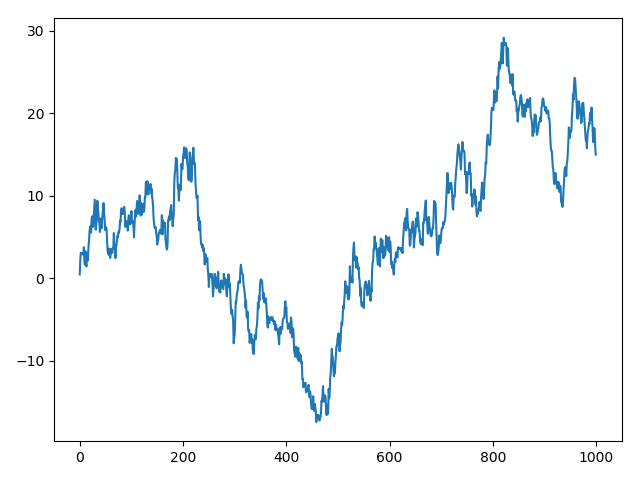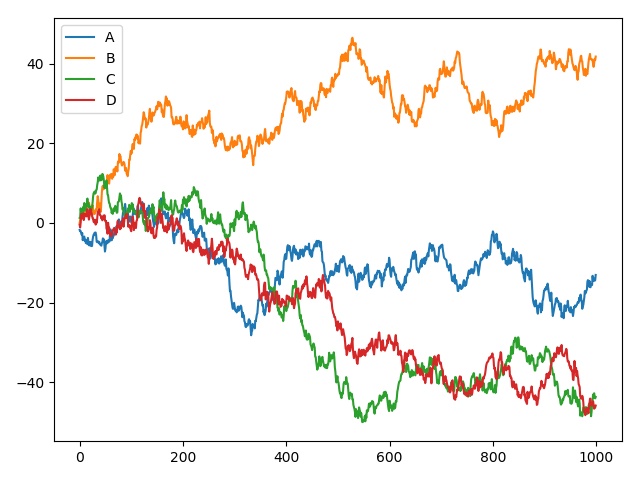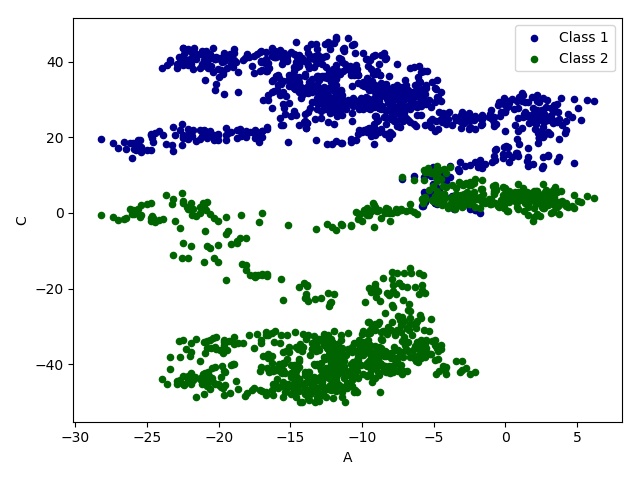
import 结果:
0 1.0
1 3.0
2 6.0
3 NaN
4 44.0
5 1.0
dtype: float64
DatetimeIndex(['2019-04-09', '2019-04-10', '2019-04-11', '2019-04-12',
'2019-04-13'],
dtype='datetime64[ns]', freq='D')
a b c d
2019-04-09 -0.566082 1.549990 1.251354 -0.016584
2019-04-10 0.918206 0.588483 -1.007992 -0.614753
2019-04-11 0.198062 0.906087 1.566753 -0.345369
2019-04-12 0.375125 0.183213 1.706462 2.047215
2019-04-13 1.361736 0.010675 0.145705 0.664728
0 1 2 3
0 0 1 2 3
1 4 5 6 7
2 8 9 10 11
A B C D E F
0 1.0 2013-01-02 1.0 3 test foo
1 1.0 2013-01-02 1.0 3 train foo
2 1.0 2013-01-02 1.0 3 test foo
3 1.0 2013-01-02 1.0 3 train foo
A float64
B datetime64[ns]
C float32
D int32
E category
F object
dtype: object
Int64Index([0, 1, 2, 3], dtype='int64')
Index(['A', 'B', 'C', 'D', 'E', 'F'], dtype='object')
[[1.0 Timestamp('2013-01-02 00:00:00') 1.0 3 'test' 'foo']
[1.0 Timestamp('2013-01-02 00:00:00') 1.0 3 'train' 'foo']
[1.0 Timestamp('2013-01-02 00:00:00') 1.0 3 'test' 'foo']
[1.0 Timestamp('2013-01-02 00:00:00') 1.0 3 'train' 'foo']]
A C D
count 4.0 4.0 4.0
mean 1.0 1.0 3.0
std 0.0 0.0 0.0
min 1.0 1.0 3.0
25% 1.0 1.0 3.0
50% 1.0 1.0 3.0
75% 1.0 1.0 3.0
max 1.0 1.0 3.0
0 ... 3
A 1 ... 1
B 2013-01-02 00:00:00 ... 2013-01-02 00:00:00
C 1 ... 1
D 3 ... 3
E test ... train
F foo ... foo
[6 rows x 4 columns]
F E D C B A
0 foo test 3 1.0 2013-01-02 1.0
1 foo train 3 1.0 2013-01-02 1.0
2 foo test 3 1.0 2013-01-02 1.0
3 foo train 3 1.0 2013-01-02 1.0
A B C D E F
3 1.0 2013-01-02 1.0 3 train foo
2 1.0 2013-01-02 1.0 3 test foo
1 1.0 2013-01-02 1.0 3 train foo
0 1.0 2013-01-02 1.0 3 test foo
A B C D E F
0 1.0 2013-01-02 1.0 3 test foo
2 1.0 2013-01-02 1.0 3 test foo
1 1.0 2013-01-02 1.0 3 train foo
3 1.0 2013-01-02 1.0 3 train fooimport pandas as pd
import numpy as np
dates = pd.date_range('20190409',periods=6)
df = pd.DataFrame(np.arange(24).reshape((6,4)),index=dates,columns=['A','B','C','D'])
print(df)
print(df['A'])
print(df.A)
print(df[0:3])
print(df['20190409':'20190411'])
# select by label:loc
print(df.loc['20190409'])
print(df.loc[:,['A','B']])
print(df.loc['20190411',['A','B']])
# select by position:iloc
print(df.iloc[3])
print(df.iloc[1:3,1])
print(df.iloc[[1,3,5],1:3])
# mixed selection:ix
print(df.ix[:3,['A','C']])
# Boolean indexing
print(df[df.A>8])
结果:
A B C D
2019-04-09 0 1 2 3
2019-04-10 4 5 6 7
2019-04-11 8 9 10 11
2019-04-12 12 13 14 15
2019-04-13 16 17 18 19
2019-04-14 20 21 22 23
2019-04-09 0
2019-04-10 4
2019-04-11 8
2019-04-12 12
2019-04-13 16
2019-04-14 20
Freq: D, Name: A, dtype: int32
2019-04-09 0
2019-04-10 4
2019-04-11 8
2019-04-12 12
2019-04-13 16
2019-04-14 20
Freq: D, Name: A, dtype: int32
A B C D
2019-04-09 0 1 2 3
2019-04-10 4 5 6 7
2019-04-11 8 9 10 11
A B C D
2019-04-09 0 1 2 3
2019-04-10 4 5 6 7
2019-04-11 8 9 10 11
A 0
B 1
C 2
D 3
Name: 2019-04-09 00:00:00, dtype: int32
A B
2019-04-09 0 1
2019-04-10 4 5
2019-04-11 8 9
2019-04-12 12 13
2019-04-13 16 17
2019-04-14 20 21
A 8
B 9
Name: 2019-04-11 00:00:00, dtype: int32
A 12
B 13
C 14
D 15
Name: 2019-04-12 00:00:00, dtype: int32
2019-04-10 5
2019-04-11 9
Freq: D, Name: B, dtype: int32
B C
2019-04-10 5 6
2019-04-12 13 14
2019-04-14 21 22
A C
2019-04-09 0 2
2019-04-10 4 6
2019-04-11 8 10
A B C D
2019-04-12 12 13 14 15
2019-04-13 16 17 18 19
2019-04-14 20 21 22 23import pandas as pd
import numpy as np
dates = pd.date_range('20190409',periods=6)
df = pd.DataFrame(np.arange(24).reshape((6,4)),index=dates,columns=['A','B','C','D'])
df.iloc[2,2] = 999
df.loc['20190410','B'] = 888
df.B[df.A>4] = 0
df['F'] = np.nan
df['E'] = pd.Series([1,2,3,4,5,6],index=pd.date_range('20190409',periods=6))
print(df)结果:
A B C D F E
2019-04-09 0 1 2 3 NaN 1
2019-04-10 4 888 6 7 NaN 2
2019-04-11 8 0 999 11 NaN 3
2019-04-12 12 0 14 15 NaN 4
2019-04-13 16 0 18 19 NaN 5
2019-04-14 20 0 22 23 NaN 6
import pandas as pd
import numpy as np
dates = pd.date_range('20190409', periods=6)
df = pd.DataFrame(np.arange(24).reshape((6,4)),index=dates, columns=['A','B','C','D'])
df.iloc[0,1] = np.nan
df.iloc[1,2] = np.nan
print(df)
print(df.dropna(axis=0,how='any')) # how = {'any','all'}
print(df.fillna(value=0))
print(df.isnull())
print(np.any(df.isnull()) == True) # 至少有一个nan结果:
A B C D
2019-04-09 0 NaN 2.0 3
2019-04-10 4 5.0 NaN 7
2019-04-11 8 9.0 10.0 11
2019-04-12 12 13.0 14.0 15
2019-04-13 16 17.0 18.0 19
2019-04-14 20 21.0 22.0 23
A B C D
2019-04-11 8 9.0 10.0 11
2019-04-12 12 13.0 14.0 15
2019-04-13 16 17.0 18.0 19
2019-04-14 20 21.0 22.0 23
A B C D
2019-04-09 0 0.0 2.0 3
2019-04-10 4 5.0 0.0 7
2019-04-11 8 9.0 10.0 11
2019-04-12 12 13.0 14.0 15
2019-04-13 16 17.0 18.0 19
2019-04-14 20 21.0 22.0 23
A B C D
2019-04-09 False True False False
2019-04-10 False False True False
2019-04-11 False False False False
2019-04-12 False False False False
2019-04-13 False False False False
2019-04-14 False False False False
Trueimport pandas as pd
data = pd.read_csv('G:Numpy_Pandastutorials-mastertutorials-masternumpy&pandas15_read_tostudent.csv')
print(data)
print(data.age[data.iloc[:,0]>1110])
data.to_csv('student.csv')结果:
Student ID name age gender
0 1100 Kelly 22 Female
1 1101 Clo 21 Female
2 1102 Tilly 22 Female
3 1103 Tony 24 Male
4 1104 David 20 Male
5 1105 Catty 22 Female
6 1106 M 3 Female
7 1107 N 43 Male
8 1108 A 13 Male
9 1109 S 12 Male
10 1110 David 33 Male
11 1111 Dw 3 Female
12 1112 Q 23 Male
13 1113 W 21 Female
11 3
12 23
13 21
Name: age, dtype: int64import pandas as pd
import numpy as np
# concatenating
df1 = pd.DataFrame(np.ones((3,4))*0, columns=['a','b','c','d'])
df2 = pd.DataFrame(np.ones((3,4))*1, columns=['a','b','c','d'])
df3 = pd.DataFrame(np.ones((3,4))*2, columns=['a','b','c','d'])
res = pd.concat([df1,df2,df3],axis=0,ignore_index=True)
print(res)结果:
a b c d
0 0.0 0.0 0.0 0.0
1 0.0 0.0 0.0 0.0
2 0.0 0.0 0.0 0.0
3 1.0 1.0 1.0 1.0
4 1.0 1.0 1.0 1.0
5 1.0 1.0 1.0 1.0
6 2.0 2.0 2.0 2.0
7 2.0 2.0 2.0 2.0
8 2.0 2.0 2.0 2.0# join,['inner','outer']
import pandas as pd
import numpy as np
df1 = pd.DataFrame(np.ones((3,4))*0, columns=['a','b','c','d'], index=[1,2,3])
df2 = pd.DataFrame(np.ones((3,4))*1, columns=['b','c','d','e'], index=[2,3,4])
print(df1)
print(df2)
res1 = pd.concat([df1,df2],join='outer',ignore_index=True,sort=True) # 默认是outer模式
print(res1)
res2 = pd.concat([df1,df2],join='inner',ignore_index=True)
print(res2)
res3 = pd.concat([df1,df2],axis=1,join_axes=[df1.index])
print(res3)
res = pd.concat([df1,df2],axis=1)
print(res)
# append
df1 = pd.DataFrame(np.ones((3,4))*0, columns=['a','b','c','d'])
df2 = pd.DataFrame(np.ones((3,4))*1, columns=['a','b','c','d'])
df3 = pd.DataFrame(np.ones((3,4))*2, columns=['a','b','c','d'])
s1 = pd.Series([1,2,3,4], index=['a','b','c','d'])
res = df1.append(df2, ignore_index=True)
print(res)
res = df1.append([df2,df3],ignore_index=True)
print(res)
res = df1.append(s1,ignore_index=True)
print(res)结果:
a b c d
1 0.0 0.0 0.0 0.0
2 0.0 0.0 0.0 0.0
3 0.0 0.0 0.0 0.0
b c d e
2 1.0 1.0 1.0 1.0
3 1.0 1.0 1.0 1.0
4 1.0 1.0 1.0 1.0
a b c d e
0 0.0 0.0 0.0 0.0 NaN
1 0.0 0.0 0.0 0.0 NaN
2 0.0 0.0 0.0 0.0 NaN
3 NaN 1.0 1.0 1.0 1.0
4 NaN 1.0 1.0 1.0 1.0
5 NaN 1.0 1.0 1.0 1.0
b c d
0 0.0 0.0 0.0
1 0.0 0.0 0.0
2 0.0 0.0 0.0
3 1.0 1.0 1.0
4 1.0 1.0 1.0
5 1.0 1.0 1.0
a b c d b c d e
1 0.0 0.0 0.0 0.0 NaN NaN NaN NaN
2 0.0 0.0 0.0 0.0 1.0 1.0 1.0 1.0
3 0.0 0.0 0.0 0.0 1.0 1.0 1.0 1.0
a b c d b c d e
1 0.0 0.0 0.0 0.0 NaN NaN NaN NaN
2 0.0 0.0 0.0 0.0 1.0 1.0 1.0 1.0
3 0.0 0.0 0.0 0.0 1.0 1.0 1.0 1.0
4 NaN NaN NaN NaN 1.0 1.0 1.0 1.0
a b c d
0 0.0 0.0 0.0 0.0
1 0.0 0.0 0.0 0.0
2 0.0 0.0 0.0 0.0
3 1.0 1.0 1.0 1.0
4 1.0 1.0 1.0 1.0
5 1.0 1.0 1.0 1.0
a b c d
0 0.0 0.0 0.0 0.0
1 0.0 0.0 0.0 0.0
2 0.0 0.0 0.0 0.0
3 1.0 1.0 1.0 1.0
4 1.0 1.0 1.0 1.0
5 1.0 1.0 1.0 1.0
6 2.0 2.0 2.0 2.0
7 2.0 2.0 2.0 2.0
8 2.0 2.0 2.0 2.0
a b c d
0 0.0 0.0 0.0 0.0
1 0.0 0.0 0.0 0.0
2 0.0 0.0 0.0 0.0
3 1.0 2.0 3.0 4.0import pandas as pd
left = pd.DataFrame({'key': ['K0', 'K1', 'K2', 'K3'],
'A': ['A0', 'A1', 'A2', 'A3'],
'B': ['B0', 'B1', 'B2', 'B3']})
right = pd.DataFrame({'key': ['K0', 'K1', 'K2', 'K3'],
'C': ['C0', 'C1', 'C2', 'C3'],
'D': ['D0', 'D1', 'D2', 'D3']})
print(left)
print(right)
res = pd.merge(left,right,on='key')
print(res)
结果:
key A B
0 K0 A0 B0
1 K1 A1 B1
2 K2 A2 B2
3 K3 A3 B3
key C D
0 K0 C0 D0
1 K1 C1 D1
2 K2 C2 D2
3 K3 C3 D3
key A B C D
0 K0 A0 B0 C0 D0
1 K1 A1 B1 C1 D1
2 K2 A2 B2 C2 D2
3 K3 A3 B3 C3 D3# consider two keys
import pandas as pd
left = pd.DataFrame({'key1': ['K0', 'K0', 'K1', 'K2'],
'key2': ['K0', 'K1', 'K0', 'K1'],
'A': ['A0', 'A1', 'A2', 'A3'],
'B': ['B0', 'B1', 'B2', 'B3']})
right = pd.DataFrame({'key1': ['K0', 'K1', 'K1', 'K2'],
'key2': ['K0', 'K0', 'K0', 'K0'],
'C': ['C0', 'C1', 'C2', 'C3'],
'D': ['D0', 'D1', 'D2', 'D3']})
print(left)
print(right)
res = pd.merge(left,right,on=['key1','key2'],how='inner') # 默认inner 相同的保留下来
print(res)
# how=['left','right','innner','outer']
res = pd.merge(left,right,on=['key1','key2'],how='outer')
print(res)
结果:
key1 key2 A B
0 K0 K0 A0 B0
1 K0 K1 A1 B1
2 K1 K0 A2 B2
3 K2 K1 A3 B3
key1 key2 C D
0 K0 K0 C0 D0
1 K1 K0 C1 D1
2 K1 K0 C2 D2
3 K2 K0 C3 D3
key1 key2 A B C D
0 K0 K0 A0 B0 C0 D0
1 K1 K0 A2 B2 C1 D1
2 K1 K0 A2 B2 C2 D2
key1 key2 A B C D
0 K0 K0 A0 B0 C0 D0
1 K0 K1 A1 B1 NaN NaN
2 K1 K0 A2 B2 C1 D1
3 K1 K0 A2 B2 C2 D2
4 K2 K1 A3 B3 NaN NaN
5 K2 K0 NaN NaN C3 D3import pandas as pd
df1 = pd.DataFrame({'col1':[0,1], 'col_left':['a','b']})
df2 = pd.DataFrame({'col1':[1,2,2],'col_right':[2,2,2]})
print(df1)
print(df2)
res = pd.merge(df1,df2,on='col1',how='outer',indicator=True)
print(res)
res = pd.merge(df1,df2,on='col1',how='outer',indicator='indicator column')
print(res)
结果:
col1 col_left
0 0 a
1 1 b
col1 col_right
0 1 2
1 2 2
2 2 2
col1 col_left col_right _merge
0 0 a NaN left_only
1 1 b 2.0 both
2 2 NaN 2.0 right_only
3 2 NaN 2.0 right_only
col1 col_left col_right indicator column
0 0 a NaN left_only
1 1 b 2.0 both
2 2 NaN 2.0 right_only
3 2 NaN 2.0 right_onlyimport pandas as pd
left = pd.DataFrame({'A': ['A0', 'A1', 'A2'],
'B': ['B0', 'B1', 'B2']},
index=['K0', 'K1', 'K2'])
right = pd.DataFrame({'C': ['C0', 'C2', 'C3'],
'D': ['D0', 'D2', 'D3']},
index=['K0', 'K2', 'K3'])
print(left)
print(right)
# how依然有四种
res = pd.merge(left,right,left_index=True,right_index=True,how='outer')
print(res)
结果:
A B
K0 A0 B0
K1 A1 B1
K2 A2 B2
C D
K0 C0 D0
K2 C2 D2
K3 C3 D3
A B C D
K0 A0 B0 C0 D0
K1 A1 B1 NaN NaN
K2 A2 B2 C2 D2
K3 NaN NaN C3 D3
import pandas as pd
boys = pd.DataFrame({'k': ['K0', 'K1', 'K2'], 'age': [1, 2, 3]})
girls = pd.DataFrame({'k': ['K0', 'K0', 'K3'], 'age': [4, 5, 6]})
print(boys)
print(girls)
res = pd.merge(boys,girls,on='k',suffixes=['_boys','_girls'],how='outer')
print(res)结果:
k age
0 K0 1
1 K1 2
2 K2 3
k age
0 K0 4
1 K0 5
2 K3 6
k age_boys age_girls
0 K0 1.0 4.0
1 K0 1.0 5.0
2 K1 2.0 NaN
3 K2 3.0 NaN
4 K3 NaN 6.0import pandas as pd
import numpy as np
import matplotlib.pyplot as plt
# Series
data = pd.Series(np.random.randn(1000),index=np.arange(1000))
data = data.cumsum()
data.plot()
plt.show()
# DataFrame
data = pd.DataFrame(np.random.randn(1000,4),
index=np.arange(1000),
columns=list("ABCD"))
data = data.cumsum()
print(data.head(5))
#plot methods:
# 'bar','hist'.'box','kde','area','scatter'
data.plot()
ax = data.plot.scatter(x='A',y='B',color= 'DarkBlue',label='Class 1')
data.plot.scatter(x='A',y='C',color= 'DarkGreen',label='Class 2',ax=ax)
plt.show()结果:
A B C D
0 -1.746285 -0.054722 1.266026 -0.491001
1 -2.089565 0.773321 1.532086 -1.117511
2 -2.057623 0.782682 3.677874 0.119545
3 -2.498384 1.141660 2.339293 2.227382
4 -2.974943 2.509056 1.940303 1.767372






















 190
190











 被折叠的 条评论
为什么被折叠?
被折叠的 条评论
为什么被折叠?








